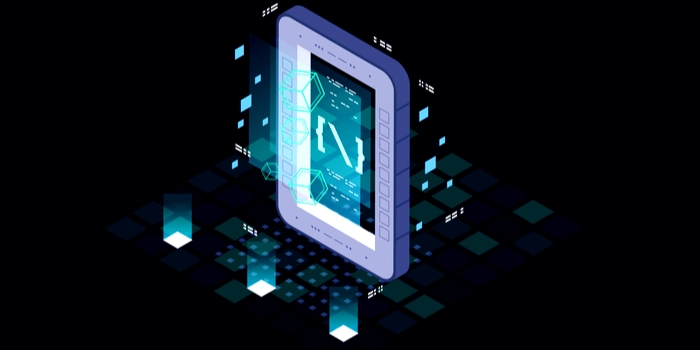One of your IT team's main tasks is to ensure all employee devices are secure and up to date. But with the move to remote work, this has become an uphill battle for companies without a comprehensive Mobile Device Management strategy. Internal IT teams are trying to reconcile multiple platforms across device types, each of which poses a unique threat to corporate data. And as cyberthreats continue to evolve, and remote platforms continue to push updates, your team may be spending a disproportionate amount of time trying to keep track of all these endpoints.
Here's Why Your Business Needs a Mobile Device Management Strategy:
What Is Mobile Device Management?
The main goal of the MDM software is to ensure that your business's data is secure. MDM allows organizations to remotely wipe information from lost or stolen devices, track the devices, and enforce passcodes, which are all essential in keeping data safe. Within device management, there are three key areas of deployment:
-
Mobile Device Management (MDM) is software that companies use to control, lockdown, and enforce policies on smartphones and tablets.
-
Mobile Application Management (MAM) is software applied to specific applications rather than the whole device. Using MAM, an IT department can lock down, control, and secure the applications on a device, and everything else on the device could still be used by the user.
-
Mobile Information Management (MIM) is a cloud-based service that can sync files and documents across various devices.
With remote work in full force, it's more important than ever to incorporate these endpoint security tools. Mobile Application Management software allows your IT team to isolate business-specific apps, such as Outlook, Teams, or OneDrive. Employees can work from home, co-working spaces, or in the office without posing a risk to corporate data. Mobile Information Management builds off this, aggregating and syncing company documents across devices.
Identifying Mobile Device Security Gaps
While it's true that MDM can effectively secure your mobile device, there are still some threats that pose a risk to your data. Mobile applications can be compromised with malware and system vulnerabilities. Users may not realize that unsecured devices and applications can extract sensitive data without their awareness or consent. This commonly occurs when fraudulent ads or applications trick users into clicking on malicious links or downloading harmful software. Delays in security updates can also weaken your security posture, so make sure your mobile device technology stack is up to date.
Mobile Device Security Vulnerabilities
-
Depending on your network carrier, there may be delays when receiving security updates.
-
Failing to use strong authentication codes on critical cloud services.
-
Difficult to detect software installed by your network operator.
Mobile Application Security Gaps
-
Poorly defined best practices or IT Governance.
-
Limited knowledge of app and vetting tool comparisons.
-
Lack of formalized standards for security controls and data security.
Mobile Device Management Tools in Microsoft 365
Microsoft offers an array of MDM tools that are helpful for Mobile Device Management, including:
-
- Helps users secure and monitor data access through app configuration policies, software update policies, and installation statuses. Intune allows users to manage multiple devices per person and the different platforms that run on each device, such as Windows 10, iOS/iPadOS, macOS, and Android.
-
- An authentication tool used to allow users to securely authenticate multiple applications by using one set of credentials. Your IT staff can implement organization-wide access controls and identity management. This ensures your employees only have access to the data they need - decreasing the likelihood of accidental, or malicious, data corruption or loss.
-
- The latest version of Microsoft's operating systems. Windows 10 has responsive and personable user interfaces, extensive application compatibility, ransomware protection, threat detection, and authentication features such as Microsoft Passport and single-sign-on.
If your business is interested in IT support and security, we are happy to assist. Check out our website and sign up for a free IT consultation.


![[BLOG] How to Keep Your Employees Cybersecure in Co-Working Spaces Webp](https://blog.icorps.com/hs-fs/hubfs/2021%20Webp%20Image%20Files/September%2029/%5BBLOG%5D%20How%20to%20Keep%20Your%20Employees%20Cybersecure%20in%20Co-Working%20Spaces%20Webp.webp?width=600&name=%5BBLOG%5D%20How%20to%20Keep%20Your%20Employees%20Cybersecure%20in%20Co-Working%20Spaces%20Webp.webp)
![[BLOG] Top 6 Ransomware Attacks of 2021 Webp](https://blog.icorps.com/hs-fs/hubfs/2021%20Webp%20Image%20Files/September%2029/%5BBLOG%5D%20Top%206%20Ransomware%20Attacks%20of%202021%20Webp.webp?width=600&name=%5BBLOG%5D%20Top%206%20Ransomware%20Attacks%20of%202021%20Webp.webp)



%20Protects%20Your%20Business%20Data%20Webp.webp?width=352&name=%5BBLOG%5D%205%20Ways%20Microsoft%20Enterprise%20Mobility%20+%20Security%20(EMS)%20Protects%20Your%20Business%20Data%20Webp.webp)